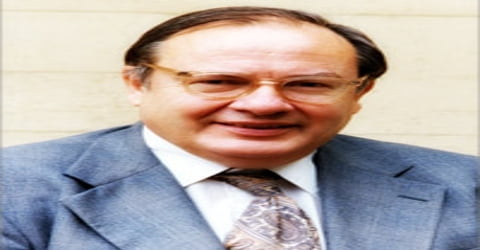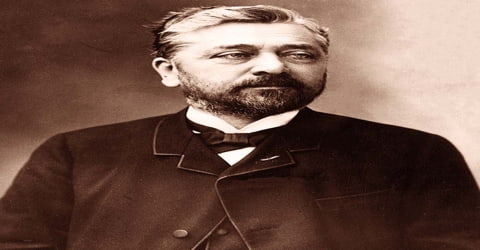Biography of Arthur Leonard Schawlow
Arthur Leonard Schawlow – American physicist.
Name: Arthur Leonard Schawlow
Date of Birth: May 5, 1921
Place of Birth: Mount Vernon, New York, United States
Date of Death: April 28, 1999 (aged 77)
Place of Death: Palo Alto, California, United States
Occupation: Physicist
Father: Arthur Schawlow
Mother: Helen (Mason)
Spouse/Ex: Aurelia Townes (m. 1951)
Children: 3
Early Life
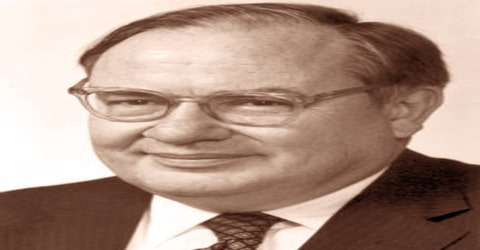
An American physicist and corecipient, with Nicolaas Bloembergen of the United States and Kai Manne Börje Siegbahn of Sweden, of the 1981 Nobel Prize for Physics for his work in developing the laser and in laser spectroscopy, Arthur Leonard Schawlow was born on May 5, 1921, Mount Vernon, New York, U.S. His mother, Helen (Mason), was from Canada, and his father, Arthur Schawlow, was a Jewish immigrant from Riga (then in the Russian Empire, now in Latvia).
Recognized for his work in developing the laser and laser spectroscopy, Schawlow also performed significant investigations in the areas of superconductivity and nuclear resonance. A very humble person despite his groundbreaking research and achievements, he described himself as “the most uncompetitive person you ever saw” and felt that he was best suited to work as a team with other scientists. Born in the United States and raised in Canada, he developed a scientific approach to life quite early on. He tinkered with radio sets and other mechanical items he could find and read voraciously on various subjects. A brilliant student, he aspired to go to the University of Toronto to study radio engineering but the nation was still reeling under the Great Depression and his family was unable to afford the fees for his university education. However, he was able to win a scholarship to study mathematics and physics at the faculty of Arts at the University of Toronto. Canada was at war when he graduated and he had to postpone his higher studies for a while. Eventually, he was able to complete his research and embark on an academic career where his research focused on optics, in particular, lasers and their use in spectroscopy.
Childhood, Family and Educational Life

Arthur L. Schawlow, in full Arthur Leonard Schawlow, was born on 5 May 1921, in Mount Vernon, New York, the U.S. to Arthur and Helen, who hailed from Latvia and western Canada, respectively. His father worked for a life insurance company. He had one elder sister. Schawlow was raised in his mother’s Protestant religion. The family moved to Canada at his mother’s urging when Arthur was a young boy. He was scientifically inclined from an early age and grew up tinkering with radio receivers and playing with his Meccano model set. A voracious reader, he read everything he could find on electrical, mechanical or astronomical subjects in the library. Schawlow received his primary education from Winchester elementary school, the Normal Model School attached to the teacher’s college
At the age of 16, Schawlow completed high school at Vaughan Road Academy (then Vaughan Collegiate Institute), and received a scholarship in science at the University of Toronto (Victoria College). After earning his undergraduate degree, Schawlow continued in graduate school at the University of Toronto which was interrupted due to World War II. At the end of the war, he began work on his Ph.D. at the university with Professor Malcolm Crawford. He then took a postdoctoral position with Charles H. Townes at the physics department of Columbia University in the fall of 1949. He used high-resolution spectroscopy to study nuclear characteristics. By this time he had published seven papers, most notably on electric field distribution within nuclei.
Personal Life
In 1951, Arthur Leonard Schawlow married Aurelia Townes, the younger sister of his postdoctoral advisor, Charles Townes. They had three children: Arthur Jr., Helen, and Edith. Arthur Jr. was autistic, with very little speech ability. His wife died in a tragic accident in 1991.
Schawlow considered himself to be an orthodox Protestant Christian and attended a Methodist church. He was an intense fan and collector of traditional American jazz recordings, as well as a supporter of instrumental groups performing this type of music.
Career and Works
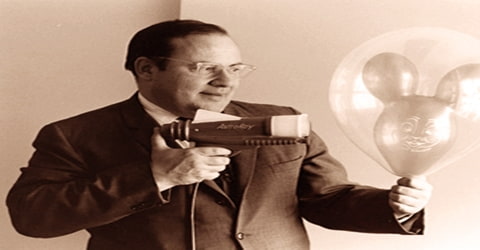
In 1949 Arthur Leonard Schawlow went to Columbia University, where he began collaborating with Charles Townes on the development of the maser (a device that produces and amplifies electromagnetic radiation mainly in the microwave region of the spectrum), the laser (a device similar to the maser that produces an intense beam of light of a single color), and laser spectroscopy. Schawlow worked on the project that led to the construction of the first working maser in 1953 (for which Townes received a share of the 1964 Nobel Prize for Physics).
Schawlow accepted a position as a physicist at Bell Telephone Laboratories in 1951. He would spend a decade there, performing research that predominantly focused on superconductivity and nuclear quadrupole resonance. He continued his collaboration with Charles Townes now his brother-in-law and worked with him on the book ‘Microwave Spectroscopy’ which was published in 1955. Over the years his stature as a physicist grew and he was offered faculty positions by several universities.
In 1958 Schawlow and Townes published a paper in which they outlined the working principles of the laser, though the first such working device was built by another American physicist, Theodore Maiman, in 1960.
Schawlow left in 1961 to join the faculty at Stanford University as a professor. He remained at Stanford until he retired to emeritus status in 1996. Although his research focused on optics, in particular, lasers and their use in spectroscopy, he also pursued investigations in the areas of superconductivity and nuclear resonance. Schawlow shared the 1981 Nobel Prize in Physics with Nicolaas Bloembergen and Kai Siegbahn for their contributions to the development of laser spectroscopy.
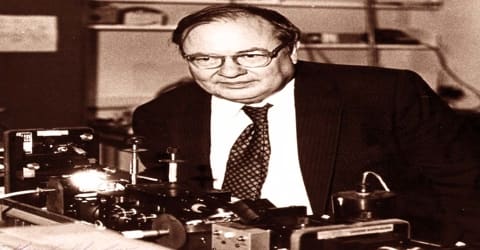
Schawlow became a world authority on laser spectroscopy, and he and Bloembergen earned their share of the 1981 Nobel Prize by using lasers to study the interactions of electromagnetic radiation with matter. His works include Infrared and Optical Masers (1958) and Lasers and Their Uses (1983). A few years after winning the Nobel Prize, Schawlow wrote an article on the laser for Encyclopædia Britannica’s 1987 Yearbook of Science and the Future.
Schawlow served as chairman of the department of physics at Stanford University in Palo Alto, California, from 1966 to 1970, and was appointed J.G. Jackson and C.J. Wood Professor of Physics in 1978. He retired to emeritus status in 1996.
Awards and Honor
Arthur Leonard Schawlow and Nicolaas Bloembergen were jointly awarded one half of the Nobel Prize in Physics 1981 “for their contribution to the development of laser spectroscopy.” The other half went to Kai M. Siegbahn “for his contribution to the development of high-resolution electron spectroscopy.”
Schawlow was also the recipient of Stuart Ballantine Medal (1962), Marconi Prize (1977), and National Medal of Science (1991).
Death and Legacy
Arthur Leonard Schawlow suffered from several health problems including rheumatoid arthritis, leukemia and congestive heart failure in his later years. He died on April 28, 1999, shortly before his 78th birthday.
Schawlow and Professor Robert Hofstadter at Stanford, who also had an autistic child, teamed up to help each other find solutions to the condition. Arthur Jr. was put in a special center for autistic individuals, and later, Schawlow put together an institution to care for people with autism in Paradise, California. It was later named the Arthur Schawlow Center in 1999, shortly before his death on the 29th of April 1999. Schawlow was a promoter of the controversial method of facilitated communication with patients of autism.
A world authority on laser spectroscopy, Schawlow gained much acclaim for using lasers to study the interactions of electromagnetic radiation with matter. He had also contributed to the development of the first maser (a device using the stimulated emission of radiation by excited atoms to amplify or generate coherent monochromatic electromagnetic radiation in the microwave range) which was built by Charles Townes.
In 1991, the NEC Corporation and the American Physical Society established a prize: the Arthur L. Schawlow Prize in Laser Science. The prize is awarded annually to “candidates who have made outstanding contributions to basic research using lasers.”
Information Source:
